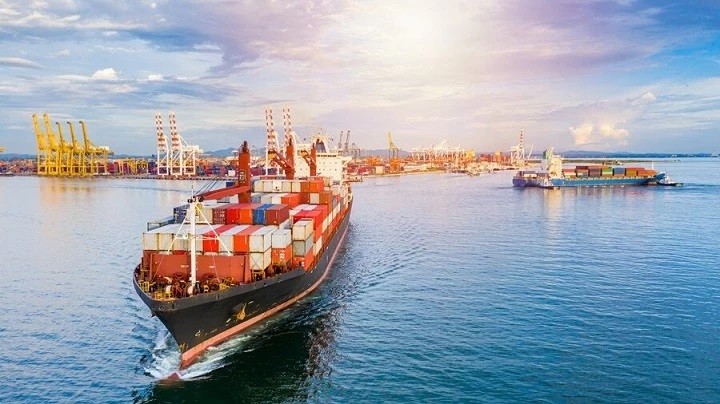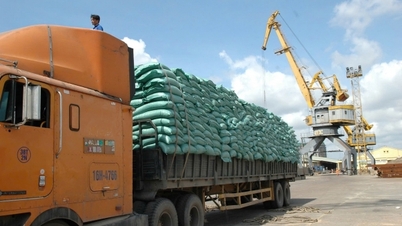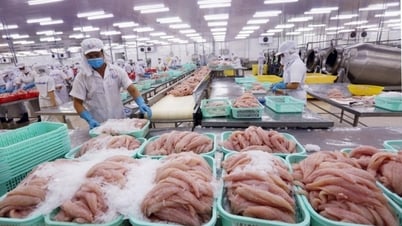Vietnam Association of Seafood Exporters and Producers (VASEP) cited information from member enterprises saying that a series of major shipping lines such as Yang Ming Line, One, Evergreen Line, HMM, Maersk... have sent notices of increased surcharges due to having to change the shipping routes of Asia - Europe, avoiding going through the Suez Canal and the Red Sea area.
Specifically, shipping rates to the US and Canada to the West Coast increased from $1,850/container in December 2023 to $2,873-2,950/container for January 2024. Shipping rates to the East Coast in December 2023 increased from $2,600/container to $4,100-4,500/container for January 2024.
Not only that, shipping rates to Europe (EU) have increased even more sharply, such as the route to Hamburg port (Germany) with a price of 1,200-1,300 USD/container in December 2023 increased to 4,350-4,450 USD/container in January.
 |
| Escalating tensions in the Red Sea have directly affected shipping rates to the US and Europe, which have skyrocketed. |
The reason, according to businesses, is that 80% of goods going to the East Coast of the US, Canada and the EU go through the Suez Canal. Due to the Israel-Hamas tension, shipping lines have to go around the Cape of Good Hope (South Africa), taking an additional 7-10 days to travel. Maritime experts say that about 20% of shipping capacity is currently unused due to the decrease in orders. Meanwhile, shipping lines continue to cut trips and have to change routes to avoid going through the Red Sea. The tightness of shipping capacity combined with the longer time each shipment takes leads to higher freight rates.
"This could be a new challenge for seafood businesses in 2024. If tensions in the Red Sea continue or escalate, it could lead to increased transportation costs and increased input prices for aquaculture and seafood processing, affecting the industry's competitiveness and profits," VASEP forecasted.
“With such a sudden increase in shipping rates, the increased costs will gradually permeate the supply chain and begin to affect consumers in the first quarter of this year,” said Alan Baer, CEO of shipping company OL-USA.
According to Mr. Tran Thanh Hai - Deputy Director of the Import-Export Department ( Ministry of Industry and Trade ), the tension in the Red Sea can cause a container passing through Europe to cost an additional 1,000 - 2,000 USD. The most affected products include textiles, footwear, wooden furniture, etc.
Faced with the above situation, the Import-Export Department - Ministry of Industry and Trade has requested industry associations and logistics associations to strengthen monitoring and regularly update the situation to businesses in the industry to grasp information to proactively plan production and import and export of goods, avoiding congestion and other adverse impacts.
The Import-Export Department recommends that import-export enterprises closely monitor the situation, proactively develop appropriate plans, and discuss with partners so that, if necessary, they can extend the time for packing and receiving goods. Enterprises should seek and diversify their supply sources to limit the impact on the supply chain. Learn about rail transport methods to have different options for delivery methods.
At the same time, when signing and negotiating commercial contracts and transportation contracts, businesses should have provisions on compensation and exemption from liability in emergency situations. It is necessary to purchase full insurance to prevent risks and losses when goods have to extend the transportation time or encounter problems when traveling through this route.
Source link




































![[Photo] Prime Minister Pham Minh Chinh and Prime Minister of the Kingdom of Thailand Paetongtarn Shinawatra attend the Vietnam-Thailand Business Forum 2025](https://vphoto.vietnam.vn/thumb/1200x675/vietnam/resource/IMAGE/2025/5/16/1cdfce54d25c48a68ae6fb9204f2171a)





































































Comment (0)